In my journey through the world of Agile and Scrum , I’ve often found myself reflecting on the intricacies of product backlog management. It’s a topic that, while seemingly straightforward, is laden with nuances that can significantly impact the value we derive from our work. Today, I want to share some insights from a recent class I attended that delved into these subtleties and how we can effectively manage our product backlogs.
Understanding Product Backlog Management
At its core, product backlog management is about ensuring that we have the right items in our backlog at the right time. The goal is to minimise the clutter while maximising the value we deliver. Here are some key takeaways that I found particularly enlightening:
Prioritisation is Key: Not all items in the backlog are created equal. It’s crucial to prioritise tasks based on their value to the customer and the business. This means regularly reviewing and adjusting the backlog to reflect changing priorities and insights.
Limit Work in Progress (WIP): One of the most effective strategies I’ve encountered is limiting the amount of work in progress. By doing so, we can focus on completing tasks rather than starting new ones, which often leads to a more efficient workflow and higher quality outcomes.
Regular Refinement Sessions: Holding regular backlog refinement sessions is essential. These meetings allow the team to discuss the items in the backlog, clarify requirements, and ensure that everyone is aligned on priorities. It’s a great opportunity to foster collaboration and shared understanding.
Embrace Feedback Loops: Agile is all about adapting to change, and our backlogs should reflect that. Incorporating feedback from stakeholders and team members can help us refine our backlog and ensure that we are always working on the most valuable items.
My Personal Experience
Reflecting on my own experiences, I recall a project where we struggled with an unwieldy backlog. It was overwhelming, and the team often felt lost in the sheer volume of tasks. After implementing a more disciplined approach to backlog management, including prioritisation and regular refinement sessions, we saw a remarkable transformation. The team became more focused, and our delivery improved significantly.
Recommendations for Effective Backlog Management
If you’re looking to enhance your product backlog management, here are some practical recommendations based on my experiences:
Use a Visual Management Tool: Tools like Kanban boards can help visualise the backlog and make it easier to manage. Seeing tasks laid out can provide clarity and help the team understand priorities at a glance.
Engage Stakeholders: Involve stakeholders in the backlog refinement process. Their insights can be invaluable in ensuring that the backlog aligns with business goals and customer needs.
Be Prepared to Say No: It’s important to recognise that not every idea or request can make it into the backlog. Being selective about what gets added is crucial for maintaining focus and delivering value.
Celebrate Small Wins: Acknowledge and celebrate the completion of backlog items. This not only boosts team morale but also reinforces the importance of maintaining a manageable backlog.
Conclusion
In conclusion, effective product backlog management is a vital component of Agile success. By minimising the clutter and focusing on what truly matters, we can maximise the value we deliver to our customers. I encourage you to reflect on your own backlog management practices and consider how you can implement some of these strategies in your work. Remember, it’s not just about having a backlog; it’s about having the right backlog.
Let’s continue to strive for excellence in our Agile practices, and together, we can create a more efficient and value-driven environment.


























